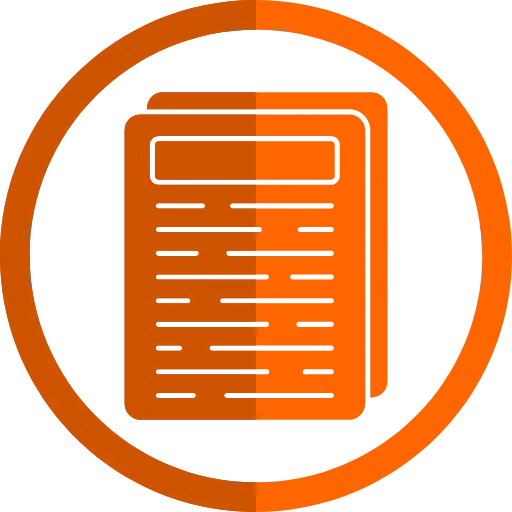

Same. I’m one and done with my Model Y.


Same. I’m one and done with my Model Y.


Play paintball.
I started playing back in the 80’s when I was in college and everybody used paint guns that could only hold about 15 rounds, and fired one at a time.
I’m way too old to run around in the woods like I did 40 years ago, and the game has completely changed as well. People have guns that can hold hundreds of paintballs and shoot incredibly fast, so the whole strategy is unlike it was. I just don’t find modern paintball enjoyable at all.


I use Calibre to remove the DRM from all ebooks I buy. Not that I buy a lot of them, but hell if I’ll let Amazon be the keeper of the keys.


Used GPS on boats as early as the late 1980’s, back when selective availability was still a thing. For those unfamiliar with it, GPS was initially military-only, and when they allowed civilian use they were concerned that US adversaries could use it for precision attacks. So SA was included in the civilian version, which introduced a random error of up to something like 1000 yards.
The truly ironic thing is that the US Coast Guard (a branch of the very military that created SA) saw the usefulness of GPS for marine navigation, but only if SA was removed. 1000 yards could easily mean the difference between a boat running aground (or worse) or not.
So the USCG built ground stations that would receive GPS signals, calculate the SA error, and broadcast a fixed signal. That was called Differential GPS, or DGPS. Boaters could buy special DGPS receivers for years, which were as accurate as GPS without the SA error.
Eventually the military was convinced to do away with SA entirely so DGPS was retired. It was only after that happened that GPS became globally useful for car, hiking, etc. navigation.


My wife and I bring water bottles we can fill up after going through security, and packs of pedialyte powder to mix into it.


Worked in a small Unix team under a broader IT department at a university. The manager of our team was awesome in part because his attitude was “I deal with all the university politics so you can focus on your work”. Anybody who has worked at a large university knows what the politics can be like.
The VP of IT retired and the replacement was hired from an IT department at another university. The new VP’s overall policy was “We will do things this way because that’s how we did it at my old university”. Within about 6 weeks we had a round of “layoffs” that targeted our manager and one other manager that was also known to push back against the university politics. They were the only two people let go out of a department of roughly 100.
Within about a year of that happening every last member of our tight knit Unix team left for greener pastures.


Our web servers are locked down in such a way that you can’t copy data off of them using standard protocols like scp, ftp, and even http, etc. Our firewall blocks all such outbound traffic.
This hacker found a bug in a framework used on our web servers that let him execute commands remotely. When commands to copy data off the server failed using those more typical methods he switched to a more novel (and difficult) method of leveraging DNS instead. He discovered we weren’t locking DNS down the same way we were locking other protocols down and used that as a way to extract data from our server.


I never would have thought of it but I recently saw a novel use of DNS to exfiltrate data from a compromised server.
My employer takes security very seriously. Our public facing web servers are very thoroughly locked down, or so we thought. We contract with companies like HackerOne to perform penetration testing etc. One of their white hat hackers managed a remote command attack, and copied data off of the server via a string of DNS queries.
Suppose the hacker owned the domain example.com, and he had his own authoritative nameserver for it. He just ran a series of commands that took, for example, a password file, and ran DNS queries for line1.example.com, line2.example.com, line3.example.com and so on for each line in the file. As a result the log file on his DNS server collected each line of the password file as it responded to each query.


Reminds me of a Russian oligarch that reportedly wanted to keep people from looking up his mega yacht online so he Named it “A”. But if you just Google “yacht A” you’ll find all sorts of information on it.
What’s that shark got against New England?


Back in the 90’s when I was involved with the USCG in the Boston area they had an encrypted radio system that could be used when talking about sensitive subjects that you didn’t want every boat in a 10 mile radius to listen in on. The problem with that system was the range was very limited & the audio quality wasn’t the greatest.
Over time as cellphone coverage along the coast improved we switched to just using them to call into the comm center at the station when we wanted privacy. I’m a bit surprised the cops don’t just do that as well, although I guess if they need to communicate with a bunch of cops all at once then phones wouldn’t work very well.
Libraries around here also have free passes to museums among other things.


Just as long as he declares it “an official act”. I think he just has to say that. It doesn’t have to be written down or anything. And it doesn’t matter if anybody actually hears him say it, as long as he does.


It’s not currently in the best interest.
IF Trump wins the election then it would be in the best interests of the US. It would be akin to a judge throwing out a juries verdict because the jury clearly made the wrong decision.

Parks Canada has some YouTube videos from trail cameras they installed in order to see what wildlife actually uses these and how quickly they started using them once construction was complete. Pretty neat to watch.
I’d look up links but I’m on mobile and lazy…

My understanding is that robots in warehouses like these are controlled by a central computer system that manages their movements, etc. It makes sense to have a central authority that manages all activity in an enclosed environment.
Whereas the Boston Dynamics ones are largely self contained. A number of years ago they developed a 4-legged “Pack bot” as a proof of concept. It was designed to carry hundreds of pounds of supplies and follow soldiers as they hiked through all sorts of terrain.

I used to work across the street from their labs and we would regularly see them testing their robots in the parking lot. There were lots of areas of uneven ground that made for great testing. Eventually they reached out to us and a few other companies to offer tours of their facilities.
When we took them up on the offer one of the things I immediately noticed in one of their indoor testing areas was that everything was marked with what looked kind of like QR codes. The guy giving the tour said that the computing power in the robots was still fairly limited, and they needed as much of it as possible to focus on the actual robotics. So rather than have a ton of image/video processing they opted to label things that told the robot “this is a box”, “this is a door”, “this is a table” etc.
They could then send an instruction like “pick up the box, carry it through the door, and put it on the table”. The robot would then look for the appropriate QR codes and figure out how to complete the task.
That was 10+ years ago at this point. I don’t think they need those QR codes any more.


First there were sharknados, now there are bearicanes. Where will it end?
That will trigger the trap door under the welcome mat.
Tesla Model Y owner here (never again, either). I hate the touchscreen, and also hate the way they’ve shoehorned functionality into the button/scroller controls on the steering wheel to try to address complaints.
When I first got the MY, the only way to control things like the wipers was through menus in the touchscreen. A software update introduced the ability to control them from the steering wheel controls, but even that “solution” sucks. You have to press & hold the control down while simultaneously scrolling it with your thumb. And most times you can’t scroll it from all the way off to all the way on in a single motion, so you press, scroll as much as you can, release & press again then scroll the rest of the way. A real PITA.